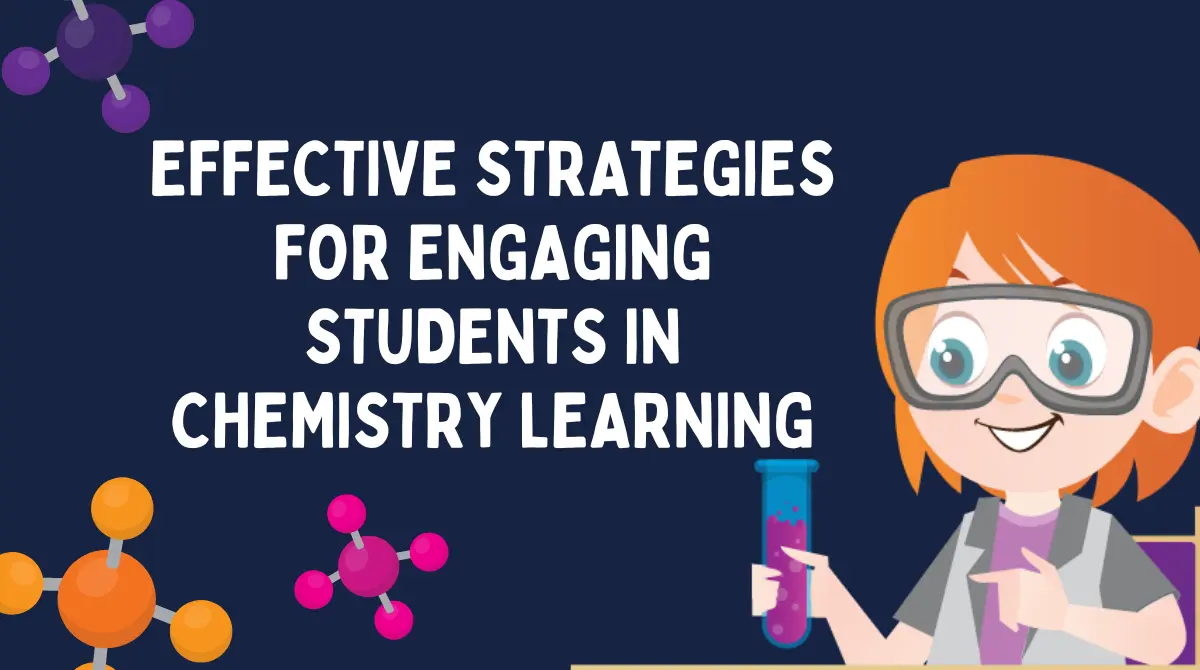Chemistry, with its intricate concepts and abstract theories, often poses a challenge for students to grasp and maintain interest. However, educators are discovering innovative methods to make Chemistry subject not only comprehensible but also enjoyable.
Strategies for Engaging Students in Chemistry Learning
Table of Contents
Lets delve into ten effective strategies for engaging students in chemistry learning.
Interactive Lab Experiments
One of the most impactful ways to engage students in chemistry is through interactive lab experiments. These hands-on activities not only solidify theoretical knowledge but also provide a tangible connection to the subject. From simple reactions to complex experiments, the laboratory becomes a dynamic space where students actively participate in the scientific process.
Gamification in Chemistry
Gamification transforms the traditional classroom into an interactive and competitive environment. By incorporating game elements into chemistry lessons, educators can tap into students’ natural inclination for competition and challenge. From chemistry quizzes to educational games, the approach is not just about fun; it’s a strategic move to enhance retention and understanding.
Innovative Teaching Tools
In the digital age, innovative teaching tools are redefining the learning experience. Virtual reality (VR), augmented reality (AR), and simulations allow students to visualize complex chemical concepts in ways textbooks cannot achieve. These tools provide a dynamic platform for exploration, turning abstract ideas into vivid, memorable experiences.
Real-World Applications
The relevance of chemistry in everyday life often goes unnoticed in traditional classrooms. Bringing real-world applications into the curriculum bridges the gap between theory and practice. Whether exploring the chemistry of cooking or environmental impacts, students gain a deeper appreciation for the subject when they see its tangible effects on the world around them.
Collaborative Learning Communities
Creating a sense of community in the chemistry classroom fosters enthusiasm for the subject. Collaborative projects, group discussions, and team-based activities encourage students to share ideas and solve problems collectively. This not only enhances their understanding but also cultivates a passion for chemistry as a collaborative and social endeavor.
Multimedia Integration
Visual aids have long been recognized as powerful tools in education. In the realm of chemistry, multimedia integration, such as animations, videos, and infographics, can simplify complex concepts. Visual representations appeal to different learning styles, making the subject more accessible and engaging for a diverse group of students.
Personalized Learning Paths
Recognizing and accommodating diverse learning styles is crucial for effective chemistry education. Personalized learning paths, facilitated by technology and adaptive learning platforms, allow students to progress at their own pace. Tailoring content to individual needs ensures that each student receives the support necessary for optimal comprehension.
Storytelling in Science
The power of storytelling extends to the sciences, including chemistry. By framing chemical concepts within narratives, educators create a context that enhances conceptual clarity. Stories captivate students’ attention, making abstract ideas more relatable and memorable.
Flipped Classroom Approaches
Flipped classroom approaches invert the traditional teaching model, with students learning foundational concepts independently through online resources before engaging in interactive discussions and activities during class time. This approach empowers students to take ownership of their learning, fostering a deeper understanding of chemistry concepts.
Inclusive Strategies
Inclusive strategies ensure that no student is left behind. Recognizing diverse learning abilities and adapting teaching methods accordingly is essential. These strategies may include providing additional support, employing assistive technologies, or offering alternative assessments to accommodate varying needs, making chemistry accessible to a broader spectrum of learners.
In conclusion, effective chemistry tutor and education goes beyond textbooks and lectures. By embracing interactive experiments, gamification, innovative tools, real-world applications, collaborative learning, multimedia integration, personalized paths, storytelling, flipped classrooms, and inclusive strategies, educators can create a vibrant and engaging environment that sparks students’ interest and fosters a lifelong love for the fascinating world of chemistry.
